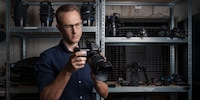
Product test
Fujifilm GFX 100 II review – the ultimate tool
by Samuel Buchmann

Are you a wealthy hipster? Your time has come. Fujifilm has got just the thing for you: the ultimate retro camera for slightly under 5,000 francs. Here’s what happened when I gave it a go.
The Fujifilm GFX100RF transfers the concept of the popular X100 series to medium format. Think compact body, retro look and fixed lens. The new luxury camera comes with a sensor almost four times as big as its predecessor but also costs three times as much – 4,998 francs or 5,499 euros. It focusses more on photography than video,
which sounds like an exciting idea. But does it make sense? I tried the Fujifilm GFX100RF and am torn. Here are the key specs compared with two other cameras that have a similar concept:
Side note: Fujifilm kindly provided me with a pre-production model of the GFX100RF for this review. As a result, it didn’t have final firmware, so theoretically, the manufacturer could still make adjustments. The camera will be available from April 2025 for 4,998 francs or 5,499 euros. It’ll soon be available for pre-order in silver or black.
A camera like this isn’t really a work tool. More than anything, it has to be fun. Its appeal comes down to a number of things, including whether it looks nice and I like to hold it. Both are the case with the Fujifilm GFX100RF. Its housing is made of metal and textured plastic. It looks solid, has a clean finish and a lot of retro charm.
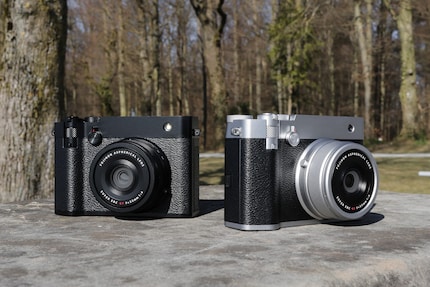
For its sensor size, the GFX100RF doesn’t weigh much and is compact. In part, that’s because it doesn’t need a large handle. With its lightweight lens, it still sits comfortably in your hand. As usual with Fujifilm, the viewfinder is on the top left rather than in the centre. And instead of a classic mechanical shutter in front of the sensor, the camera boasts a central shutter in the lens itself. This saves space and has the advantage of letting you synchronise flashes at a shutter speed of up to 1/4000th of a second.
Some of the controls are reminiscent of the X100IV, such as the dials on the top. You use one to set the shutter speed – or the ISO if I turn the dial up. You use the other one to control exposure compensation. Unfortunately, it doesn’t have a lock button, so I often adjust it by mistake. It’s the same story with the new format dial on the back.
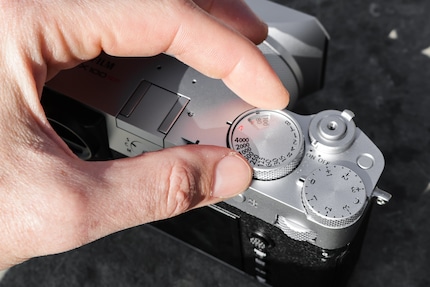
There are two other new controls on the front that let you «zoom» with a lever under the shutter release. I’ve used quotation marks because it’s actually a digital crop, which reduces the resolution accordingly. It’s applied to the viewfinder image and JPGs. However, the GFX100RF always saves RAW files in their original format.
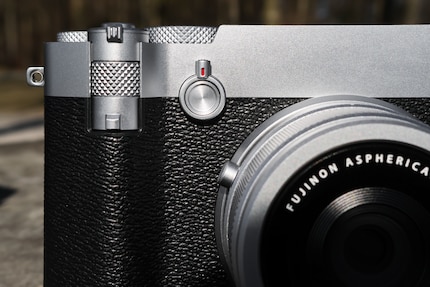
You can assign a total of five functions to a second lever with a button in the middle: one for the button, one each for a short movement to the left or right and one each for a long hold to the left or right. After a bit of getting used to it, this concept works surprisingly well. Overall, Fujifilm has done a great job with both the design and controls.
I already know the Fujifilm GFX100RF’s medium format sensor from other models, such as the GFX100 II, the GFX100S II and the Hasselblad X2D. The resolution, dynamic range and noise behaviour are all outstanding. You won’t find better image quality under 50,000 francs (site in German) anywhere. You can find more details in my review of the GFX100 II.
The GFX100RF lens has a native focal length of 35 mm. Converted to full format, that’s 28 mm (with a crop factor of 0.79). The sensor’s high resolution allows extensive cropping, and still leaves you with quite a lot of detail. If you virtually change the focal length using digital zoom, these are the resolutions you get in the native 4:3 format:
This makes the GFX100RF more versatile than it initially seems with its fixed focal length. Obviously, the image quality advantages of the medium format dissipate with digital zoom. You’re still using part of the sensor that’s surprisingly large in absolute terms. At the first zoom level, the GFX100RF turns into a full-frame camera. At the second zoom level, the crop is a bit larger than an APS-C sensor, while at the third level, it’s slightly bigger than Micro Four Thirds.
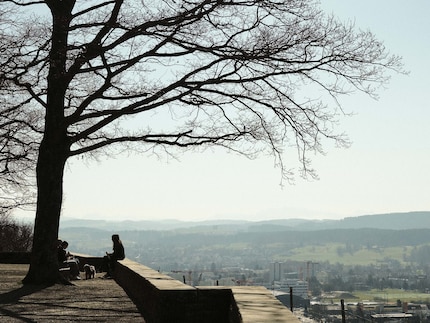
However, what bothers me is the relatively poor lens speed. It’s ƒ/4 on 35 mm, which won’t let you conjure up any significant bokeh effects. If you prefer to think in full-frame, this is roughly ƒ/3.1 on 28 mm. Please don’t let anyone tell you about a «magical medium format look». There’s no such thing. While persistent, this myth is founded on confusion about how sensor size, lens speed and focal length are related.
The second sore point is the lack of image stabiliser. Fujifilm’s reason for omitting it probably has less to do with cost-cutting and more to do with the fact it’d either make the body or lens larger. Either way, I think it was a bad decision.
When Hasselblad added an image stabiliser to the X2D with the same medium format sensor, the camera became 129 g heavier and 4.5 mm thicker than its predecessor. I’d happily accept a sacrifice like this with the Fujifilm GFX100RF if it meant I didn’t have to constantly worry about blurred images. Without a stabiliser, I’m forced to use fast shutter speeds. In low light, this means high ISO values, which in turn reduce the advantages of the large sensor.
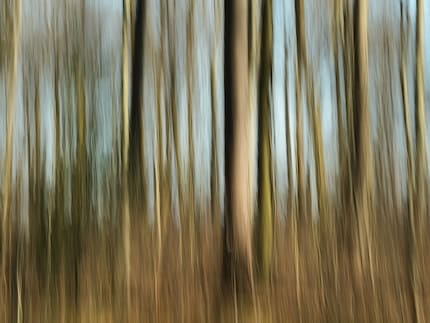
The GFX100RF also has lots to offer in bright light. The lens has an optical ND filter you can switch on at the touch of a button, which is a great feature. Not only that, it allows long exposure in daylight without requiring you to add on an extra filter. This means moving objects are displayed dynamically, such as running water or moving cars. But you can’t use this creative option spontaneously with the GFX100RF, because without the stabiliser the rest of the image is also blurred.
The display, viewfinder, processor and autofocus system are straight out of the GFX100S II. The latter recognises faces, eyes and various subjects and focusses quickly in the GFX100RF for medium format standards. It probably helps that not a lot of glass has to be moved in the small lens. You can find more details about the autofocus in the GFX100 II review.
The 3.2-inch display on the back has a good resolution of 2.36 million pixels (1,024 × 768 pixels) and is nice and bright. You can only tilt it up and down; it can’t be folded out or rotated. So if you were hoping for medium format selfies, I’m sorry to disappoint you.
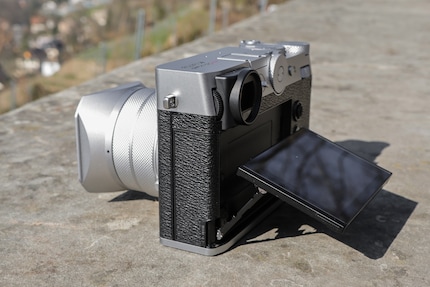
The electronic viewfinder is also fine with 5.76 million pixels (1,600 × 1,200 pixels). However, Fujifilm has missed an opportunity with the full-frame display of the digital zoom. The camera doesn’t scale the section of the sensor to the full viewfinder resolution. Instead, it continues to calculate a 2-megapixel viewfinder image from the full sensor and only then enlarges the section. The sharpness of the viewfinder therefore decreases in line with the resolution of the image file – although the sensor could still deliver around ten times as many pixels (5120 × 3840) even at the highest digital zoom level.
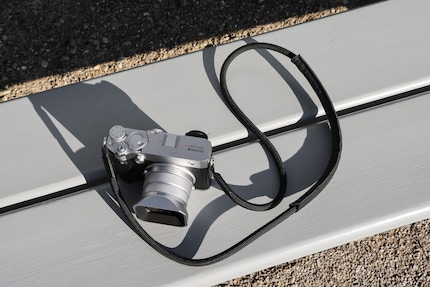
Fujifilm’s new medium format miniature is an interesting compromise. It currently offers the best balance of image quality and compactness. The controls, autofocus, display and electronic viewfinder are also solid. But the concept does come with disadvantages, namely high costs, no image stabiliser and a low-speed lens despite a fixed focal length.
That being said, I’m sure the GFX100RF will find its fan club. The overall package works great for certain applications, such as street or documentary photography. No other camera gives you this kind of high resolution in such inconspicuous housing. Even at high ISO values, the medium format sensor still delivers excellent results.
But I find that in a lot of situations, the GFX100RF has too many disadvantages. In particular, the lack of image stabilisation is limiting. The wide-angle perspective often doesn’t work. And as soon as you zoom digitally, you lose the quality advantage of having a large sensor. Don’t expect strong bokeh effects with ƒ/4 at 35 mm (equivalent of ƒ/3.1 at 28 mm in full format). And then there’s the price at almost 5,000 francs.
In terms of a camera I take everywhere with me, I’d rather buy the X100VI for a third of the cost. Fujifilm is poaching in the territory of the Leica Q3 when it comes to unlimited budgets. Although the latter only boasts a full-frame sensor, it has an image stabiliser, a fast lens (ƒ/1.7 at 28 mm) and more prestige. I can’t shake the feeling that the Leica Q3 will remain the more attractive luxury compact camera for a lot of people.
Pro
Contra
My fingerprint often changes so drastically that my MacBook doesn't recognise it anymore. The reason? If I'm not clinging to a monitor or camera, I'm probably clinging to a rockface by the tips of my fingers.